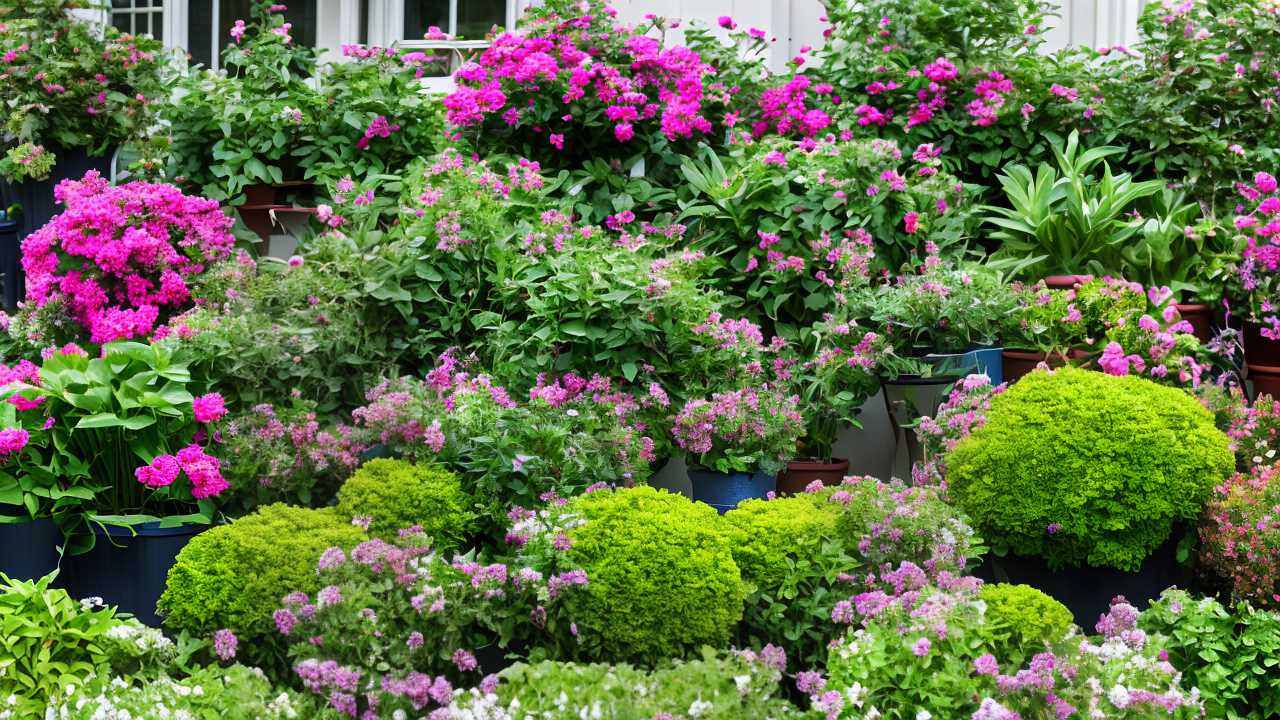
Introduction to Container Gardening
Container gardening has become increasingly popular in recent years, as it allows people to grow plants in limited spaces, such as balconies, patios, and even indoors. When it comes to container gardening, choosing the right containers is crucial for the success of your plants. In this article, we will explore the best containers for container gardening, including pots, planters, and boxes, and discuss the various materials available.
Factors to Consider When Choosing Containers
Before we dive into the specific types of containers, it's essential to understand the factors that should be considered when selecting containers for your plants:
1. Size: The size of the container should be appropriate for the plant you intend to grow. Larger plants require bigger containers to accommodate their root systems, while smaller plants can thrive in more compact containers.
2. Drainage: Proper drainage is vital for the health of your plants. Containers should have drainage holes at the bottom to allow excess water to escape, preventing waterlogging and root rot.
3. Material: Containers can be made from various materials, each with its own advantages and disadvantages. Some common materials include plastic, ceramic, terracotta, and wood.
4. Durability: Consider the durability of the container, especially if you plan to use it outdoors. Some materials, such as plastic and fiberglass, are more weather-resistant than others.
5. Aesthetics: While functionality is crucial, the appearance of your containers can also enhance the overall look of your garden. Choose containers that complement your personal style and the surrounding environment.
Types of Containers for Container Gardening
1. Pots: Pots are the most common type of container used in container gardening. They come in various sizes, shapes, and materials, making them suitable for a wide range of plants. Terracotta pots are popular for their classic look and breathability, while plastic pots are lightweight and affordable.
2. Planters: Planters are larger containers that can accommodate multiple plants or larger specimens. They are often rectangular or square in shape and can be made from materials like wood, concrete, or fiberglass. Planters are ideal for creating small gardens on patios or balconies.
3. Hanging Baskets: Hanging baskets are perfect for growing trailing plants or creating a vertical garden. They can be suspended from ceilings, walls, or stands, adding a unique dimension to your container garden. Hanging baskets are commonly made from wire, plastic, or coconut fiber.
4. Window Boxes: Window boxes are long, narrow containers designed to fit on window sills or railings. They are excellent for growing flowers, herbs, or small vegetables, and can add a charming touch to your home's exterior.
5. Grow Bags: Grow bags are fabric containers that are lightweight and portable. They are made from breathable materials, such as felt or canvas, which allows for better air circulation and drainage. Grow bags are particularly useful for growing vegetables like tomatoes and potatoes.
Materials for Container Gardening
1. Plastic: Plastic containers are lightweight, durable, and affordable. They come in a wide range of colors and sizes, making them a versatile option for container gardening. However, plastic containers may not be as aesthetically pleasing as other materials and can deteriorate over time.
2. Terracotta: Terracotta pots are made from clay and have a classic, rustic appearance. They are porous, allowing for good air circulation and drainage. However, terracotta pots are fragile and can crack in extreme temperatures.
3. Ceramic: Ceramic containers are similar to terracotta but are glazed, making them more durable and water-resistant. They offer a wide range of colors and designs, adding a decorative element to your container garden. However, ceramic containers can be heavy and expensive.
4. Wood: Wooden containers, such as barrels or boxes, provide a natural and rustic look to your garden. They are often used for larger plants or as raised beds. However, wood can rot over time and may require treatment to extend its lifespan.
5. Metal: Metal containers, such as galvanized steel or copper, offer a modern and industrial aesthetic. They are durable and can withstand extreme weather conditions. However, metal containers can heat up quickly in direct sunlight, which may stress plants.
Conclusion
Choosing the best containers for your container garden depends on various factors, including the size of your plants, drainage requirements, material preferences, and overall aesthetics. By considering these factors and exploring the different types of containers available, you can create a thriving and visually appealing container garden that suits your specific needs and style.
Remember to prioritize the health and well-being of your plants when selecting containers, ensuring they have adequate space, proper drainage, and suitable materials. With the right containers and a little care and attention, your container garden can flourish, providing you with a beautiful and bountiful harvest.


